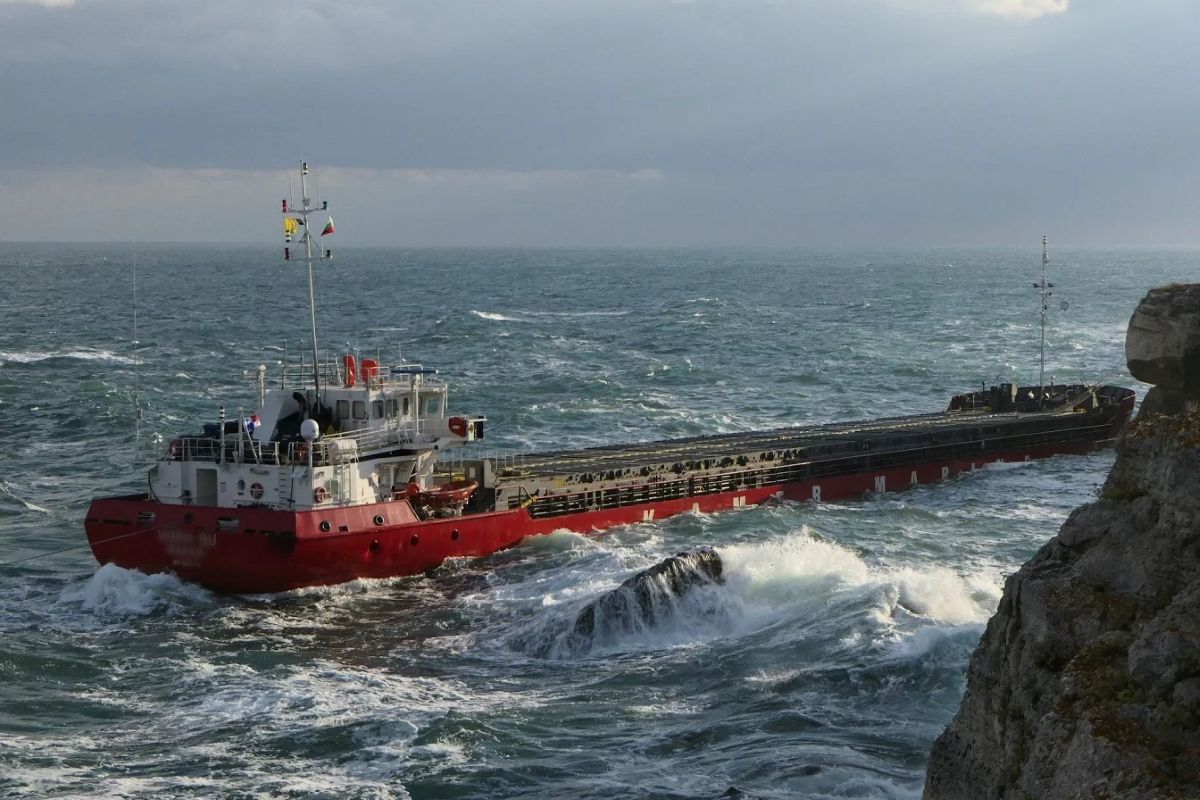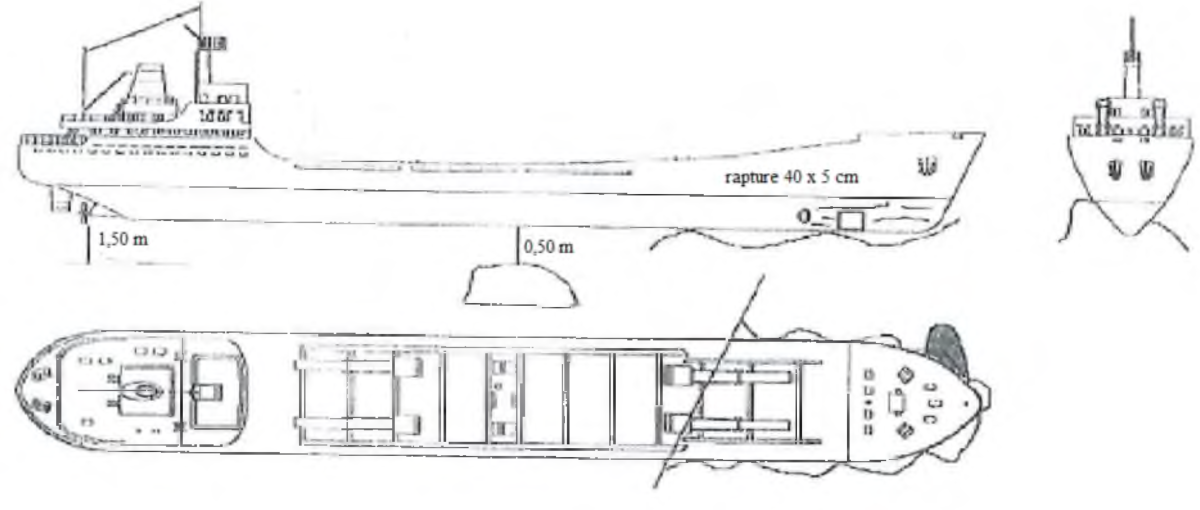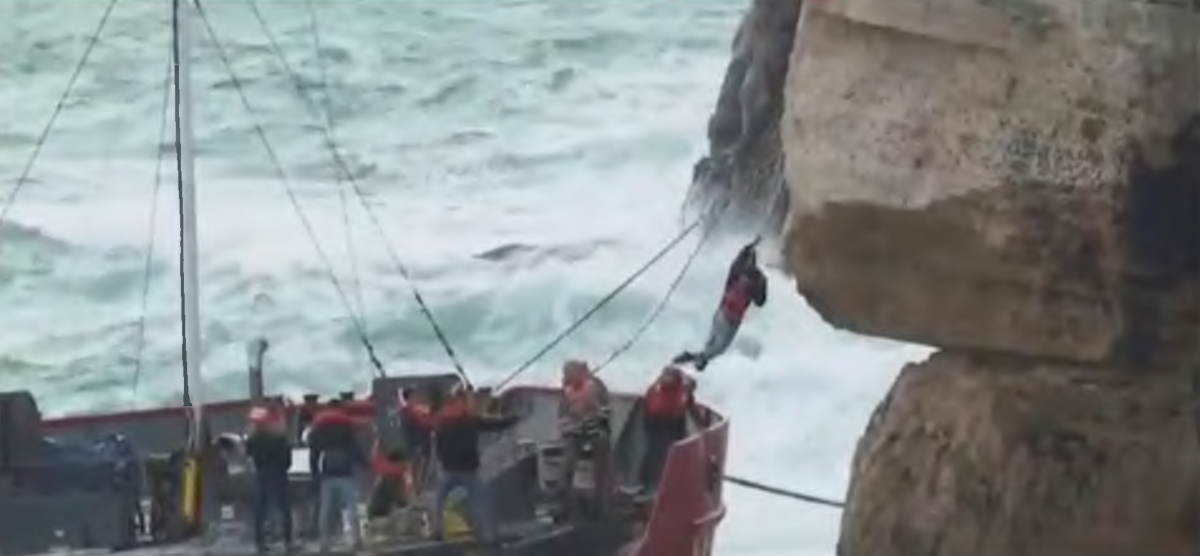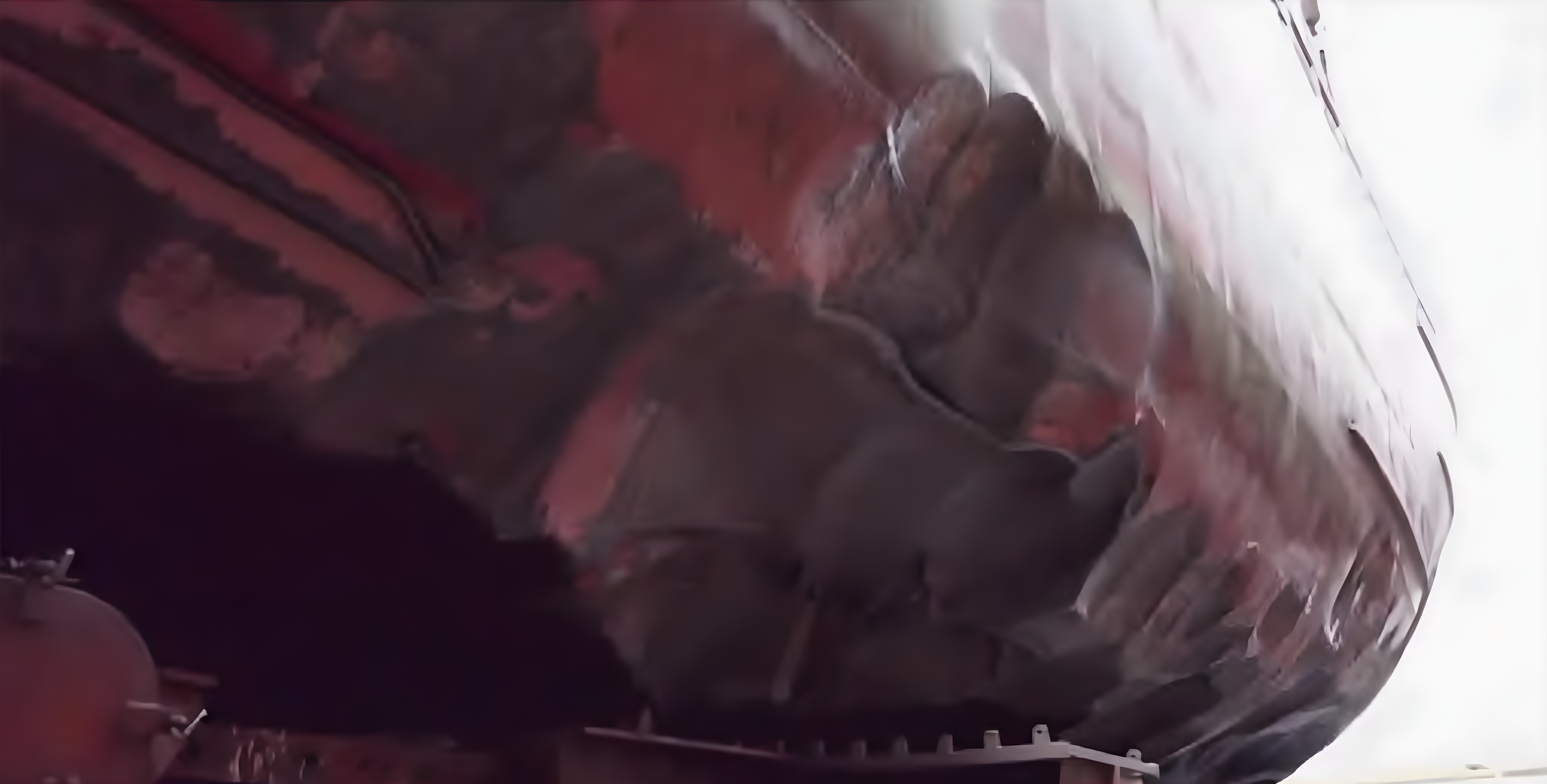ON 20 SEPTEMBER 2021, A GENERAL CARGO SHIP RAN AGROUND ON THE ROCKY COAST OF THE YAILATA PROTECTED AREA IN BULGARIA. THE INCIDENT OCCURRED WHEN THE SHIP, TRAVELING FROM YUZHNIY, UKRAINE, TO VARNA, BULGARIA, DEVIATED FROM ITS PLANNED COURSE BECAUSE THE SECOND OFFICER (2/O) ON WATCH FELL ASLEEP. THE BRIDGE NAVIGATIONAL WATCH ALARM SYSTEM (BNWAS) WAS FOUND DEACTIVATED, REMOVING A CRITICAL SAFETY NET. THE INVESTIGATION BY THE BULGARIAN NATIONAL AIR, MARITIME, AND RAIL ACCIDENT INVESTIGATION BOARD (NAMRAIB) CONCLUDED THAT FATIGUE, INSUFFICIENT LOOKOUT ARRANGEMENTS, AND LAPSES IN THE SHIPS SAFETY MANAGEMENT SYSTEM (SMS) CONTRIBUTED SIGNIFICANTLY TO THE INCIDENT. THIS CASE STUDY EXAMINES THE EVENT, THE DAMAGE INCURRED, AND THE LESSONS LEARNED TO IMPROVE SAFETY PROTOCOLS AND PREVENT SIMILAR ACCIDENTS IN THE FUTURE.

Source Republic of Bulgaria NAMRAIB
INCIDENT OVERVIEW
BACKGROUND OF SHIP AND VOYAGE DETAILS
The 1,984 gt ship, built in 1989, is registered under the Panamanian flag and has an overall length of 89.21m. The ship departed from Yuzhniy, Ukraine, on 18 September 2021, carrying a cargo of 2,837 metric tons of urea fertiliser. As the ship proceeded towards its destination in Varna, Bulgaria, it was expected to follow a Traffic Separation Scheme (TSS) in Bulgarian waters, designed to enhance navigational safety in congested areas near the shore.
SUMMARY OF THE INCIDENT
At midnight on 20 September 2021, the 2/O relieved the master to take over the 0000 to 0400 navigational watch. However, contrary to the SMS and international regulations, no additional lookout was assigned for the night watch. The BNWAS, designed to alert the crew if the officer on watch becomes incapacitated, was turned off.
During the night, the ship proceeded on autopilot. The 2/O conducted his watch normally. However, between 0345 and 0355, he briefly sat on the bridge’s couch and fell asleep. This lapse proved critical. At 0353, the ship failed to execute a planned turn to join the TSS and continued a straight course towards the shoreline. Coastal authorities monitoring the ship attempted to call on Very High Frequency (VHF) radio when it did not alter course, but the 2/O failed to respond.

Source Republic of Bulgaria NAMRAIB
At around 0413, the ship ran aground at a speed of 7.8 knots in the Yailata Protected Area, causing extensive hull damage. Water entered several ballast tanks through breaches in the hull, but there was no immediate fuel leakage. The impact rendered the ship immobile, and the rocky bottom complicated subsequent refloating efforts.

Source Republic of Bulgaria NAMRAIB
POST-INCIDENT ACTIONS
Following the grounding, the 2/O was awakened by the loud noise of the ship grounding. He stopped the engine and alerted the rest of the crew, including the master and chief officer (C/O). Upon arriving at the bridge, the master ordered the crew to refrain from responding to VHF calls and initially instructed the crew to turn off the Automatic Identification System (AIS). These decisions delayed emergency response efforts and raised questions about the master’s judgment during the critical moments following the grounding.
The master attempted to use the main engine to reverse the ship off the rocks, despite objections from the C/O and other crew members, who feared that further damage to the hull might result. At 0512, the ship finally established radio contact with VTS-Varna and reported the grounding. Fortunately, no injuries were reported among the crew, and there was no immediate pollution. However, the delay in communication hampered early response efforts.

Source Republic of Bulgaria NAMRAIB
Coastal authorities dispatched border patrol ships and a rescue boat to the scene, but the rocky terrain and shallow waters limited their access. Subsequent inspections found that the hull had suffered multiple breaches, resulting in water ingress that complicated efforts to refloat the ship.
DAMAGE CAUSED
ENVIRONMENTAL IMPACT
The grounding of the ship posed a significant environmental risk due to the cargo of urea, a chemical fertiliser that, in large concentrations, can lead to eutrophication and ecological imbalances in marine environments. To address this, the Bulgarian Black Sea Basin Directorate and the Institute of Oceanology, monitored the site and worked to mitigate ecological damage. Efforts to discharge the cargo and refloat the vessel helped but did not fully eliminate the environmental impact.
SHIP DAMAGE
The ship sustained substantial structural damage, primarily to the hull, due to its impact with the rocky seabed. Initial inspections revealed breaches in several ballast tanks, resulting in water ingress, which further complicated refloating efforts. Over time, as the ship remained grounded, the pressure on the hull increased, exacerbating the structural damage. Subsequent refloating attempts required specialised equipment, including a floating crane and tugs, as well as partial cargo unloading to lighten the ship. The ship was eventually refloated and towed to Varna, where a detailed inspection revealed the full extent of damage to the hull, cargo hold and other mechanical systems.

Source Republic of Bulgaria NAMRAIB

Source Republic of Bulgaria NAMRAIB
INVESTIGATION FINDINGS
The investigation identified several procedural lapses that contributed to the grounding. The most significant failure was the deactivation of the BNWAS system, which would have alerted the crew when the 2/O became incapacitated. The SMS procedures required the BNWAS to always remain active, but the system was manually turned off, and no record of its deactivation was made in the ship’s logbook.
Another critical error was the absence of a lookout during the watch. The SMS required an additional lookout to be present during the hours of darkness, but the master released the lookouts from their duties, assigning them to general deck work during the day instead. This decision left the 2/O alone on the bridge during a critical phase of navigation, increasing the risk of human error.
The master’s oversight of the voyage was also called into question. The passage plan prepared by the 2/O was neither reviewed nor approved by the master or C/O. Furthermore, the master altered the ships course to sail closer to the coast but this deviation from the original route was not documented or properly communicated.
The 2/O’s fatigue was also identified as a key contributing factor to the incident. He was repeatedly summoned by the master for various tasks, including administrative duties and translations. The investigation revealed that the officer had not been able to sleep adequately since the ship’s departure from Ukraine, undermining his ability to remain alert during his watch.
Fatigue remains a critical issue in the maritime industry, and this case underscores the need for effective fatigue management.

 English
English